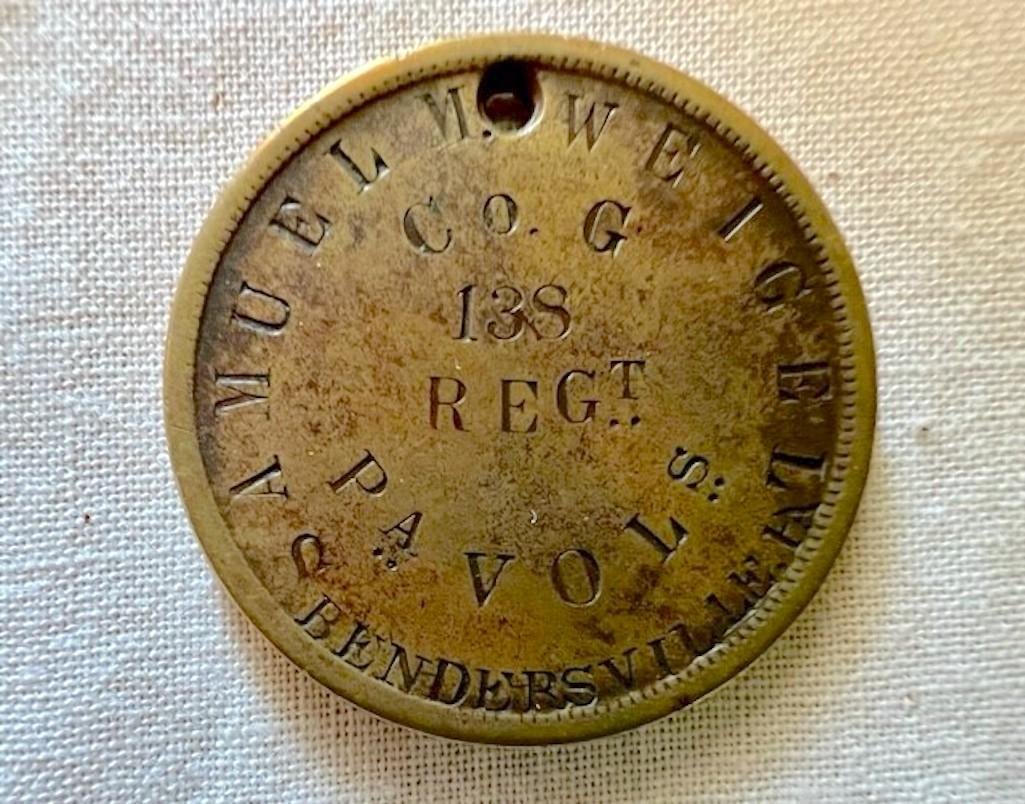Rare Civil War ID Tag Donated To Monocacy National Battlefield
By Compiled From N... - December 14th, 2021
This ID tag from a Civil War soldier was donated to the Monocacy National Battlefield/NPS
Dying in battle and being laid to rest in an unmarked grave was a common fear of Civil War soldiers. A recent addition to the collection at Monocacy National Battlefield in Maryland demonstrates one of the ways soldiers sought to ensure their loved ones would know their fate.
The Monocacy National Battlefield Foundation donated to the National Park Service a rare Civil War identification tag, in the shape of a disk, from a soldier who was wounded at the Battle of Monocacy.
The small, bronze-colored ID disk belonged to Samuel M. Weigel, a private with Company G of the 138th Pennsylvania Infantry. According to regimental history, Private Weigel was severely wounded during the Battle of Monocacy. Weigel survived his injuries and lived until 1922.
“It is amazing that after 157 years, this ID disk is returning to the battlefield,” said Andrew Banasik, the battlefield's superintendent. “This small piece of metal is a tangible reminder of the price paid by so many to save Washington.”
The ID disk is a rare addition to the park’s museum collection and will provide opportunities to highlight new stories. It will allow the park to explore the cost of the battle in casualties, soldier’s efforts to ensure their loved ones would know their fate, medical care in the Civil War, and the aftermath of the battle. The park has another ID tag from the 138th Pennsylvania that looks completely different than the recent addition.
Before the United States military provided standard issue identification tags -– often called “dog tags” -- soldiers had to find their own way to ensure their bodies could be identified. Some soldiers used stencils to mark their clothing and belongings. Others purchased small metal tags, personalized with their name and regiment. Because soldiers had to purchase these tags with their own money, there is no standardized style and no official record of how many soldiers had them.
At the Battle of Monocacy on July 9, 1864, the 138th Pennsylvania was one of several battle-hardened regiments of the VI Corps sent by Gen. U.S. Grant to intercept a Confederate army heading to Washington. Arriving hours before the battle after two days of travel, these veteran troops doubled the number of U.S. soldiers at Monocacy Junction. Positioned on the Thomas Farm, the 138th engaged in some of the fiercest fighting at Monocacy.
